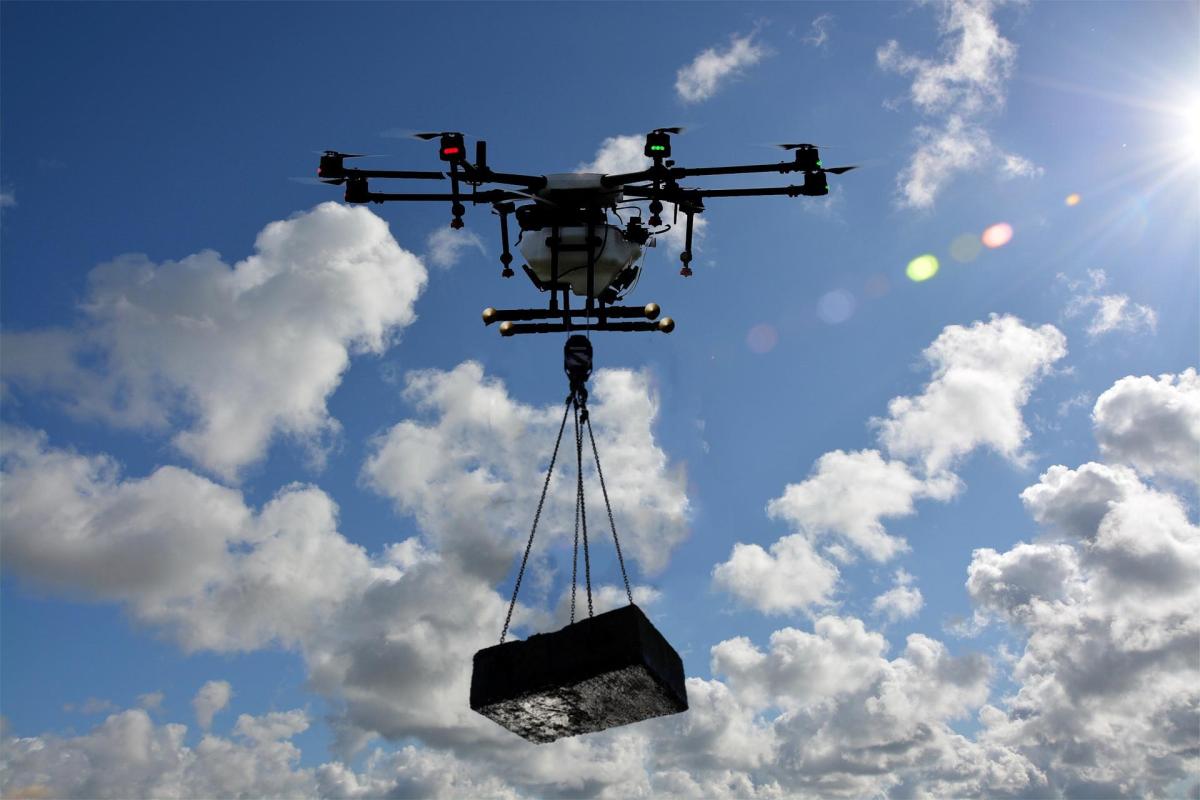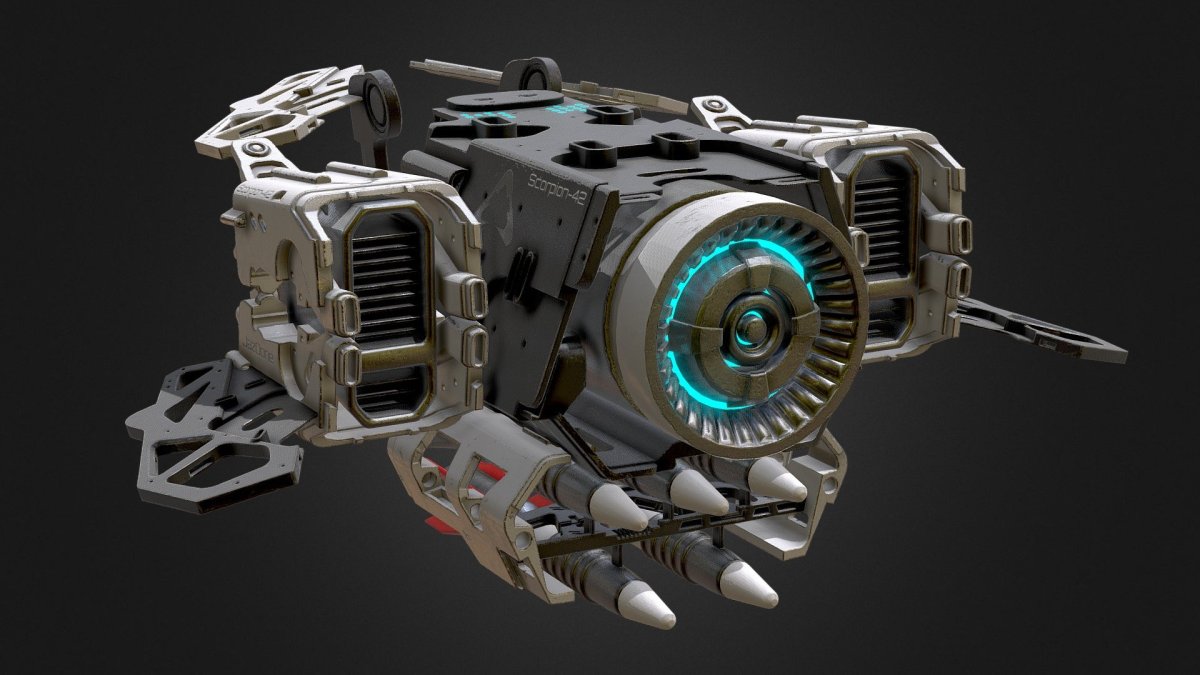Antigravity drone technology represents a potential revolution in transportation and various industries. Imagine drones effortlessly floating, defying gravity, and performing tasks previously impossible. This exploration delves into the feasibility, applications, safety concerns, and design considerations of this futuristic technology, examining the scientific hurdles and the transformative possibilities it offers.
From search and rescue operations in inaccessible terrains to precision military deployments and efficient delivery systems, the potential applications are vast. However, significant challenges remain, including the development of efficient power sources, robust safety protocols, and a comprehensive regulatory framework. This article will unpack these issues, offering a balanced perspective on the exciting yet complex world of antigravity drones.
Technological Feasibility of Antigravity Drones

The concept of antigravity drones, capable of defying Earth’s gravitational pull, currently resides firmly in the realm of science fiction. However, exploring the theoretical possibilities and technological hurdles involved is a crucial step towards assessing its long-term feasibility. While true antigravity, as depicted in popular culture, remains elusive, examining current scientific understanding and potential breakthroughs offers valuable insights.
Current State of Antigravity Technology and its Potential Application in Drone Development
Currently, no technology exists that allows for the complete negation of gravity. Our understanding of gravity is primarily based on Einstein’s theory of general relativity, which describes gravity as a curvature of spacetime caused by mass and energy. Manipulating gravity directly remains far beyond our current capabilities. However, advancements in areas like quantum physics and advanced materials could potentially unlock new avenues for influencing gravitational forces in the future, although these are still highly speculative.
Challenges and Limitations in Achieving True Antigravity Propulsion
The primary challenge lies in our limited understanding of gravity itself. Generating a significant enough counter-gravitational force to lift a drone, let alone propel it, requires an immense amount of energy, far exceeding what current technology can provide. Furthermore, the precise mechanisms for manipulating gravitational fields remain largely unknown. Overcoming these challenges necessitates fundamental breakthroughs in physics and engineering.
Theoretical Approaches to Antigravity
Several theoretical approaches to antigravity have been proposed, albeit with significant limitations. One approach involves manipulating gravitational fields through advanced technologies, potentially using extremely powerful electromagnetic fields or exotic forms of matter. Another approach involves the hypothetical existence of “negative mass,” a substance with repulsive gravitational properties. However, the existence of negative mass is purely theoretical, and there’s no experimental evidence to support its existence.
Conceptual Framework for an Antigravity Drone Propulsion System
A hypothetical antigravity drone propulsion system would require a revolutionary energy source capable of generating immense power. This system would need to interact with the gravitational field in a way that creates a repulsive force strong enough to overcome the drone’s weight. It might involve sophisticated manipulation of spacetime curvature or harnessing exotic matter with negative mass, both of which are currently beyond our technological reach.
The system would also need advanced control mechanisms to ensure stability and maneuverability. The drone itself would require incredibly strong and lightweight materials to withstand the immense forces involved.
Potential Applications and Use Cases: Antigravity Drone
The potential applications of antigravity drones, if ever realized, are vast and transformative, spanning various sectors. However, it’s crucial to consider both the benefits and potential drawbacks of such a technology.
Potential Civilian Applications for Antigravity Drones
Civilian applications could revolutionize various industries. Search and rescue operations in difficult terrains would be significantly enhanced. Delivery services could become incredibly efficient, with drones capable of bypassing traffic congestion. Environmental monitoring, particularly in remote or hazardous areas, would also benefit from the mobility and accessibility of antigravity drones.
Potential Military Applications for Antigravity Drones
Military applications could be equally transformative, although raising ethical and strategic concerns. Surveillance and reconnaissance capabilities would be vastly improved, with drones capable of silent, high-altitude observation. Targeted delivery systems could become more precise and efficient, but also potentially more dangerous. The strategic implications of such technology would need careful consideration.
Societal Impact of Widespread Antigravity Drone Adoption
The widespread adoption of antigravity drones could have profound societal implications, both positive and negative. Increased efficiency in various sectors could boost economic growth, while advancements in healthcare and disaster relief could improve quality of life. However, potential misuse for malicious purposes, privacy concerns, and the need for robust regulatory frameworks are significant challenges to address.
Table of Potential Applications
| Application Type | Benefits | Potential Challenges | Example |
|---|---|---|---|
| Search & Rescue | Faster response times, access to difficult terrain | High initial cost, potential for malfunctions | Reaching victims trapped in collapsed buildings or remote areas. |
| Delivery Services | Faster, more efficient delivery, bypassing traffic | Energy consumption, regulatory hurdles | Delivering urgent medical supplies or packages across vast distances. |
| Environmental Monitoring | Access to remote areas, real-time data collection | Cost, maintenance, potential for environmental impact | Monitoring deforestation, pollution levels, or wildlife populations. |
| Military Surveillance | Enhanced reconnaissance, silent operation | Ethical concerns, potential for misuse | Gathering intelligence in hostile territories. |
Safety and Regulatory Considerations
The safe operation of antigravity drones requires careful consideration of potential hazards and the establishment of robust regulatory frameworks. This is particularly crucial given the potential for significant damage in case of malfunction or misuse.
Potential Safety Hazards Associated with Antigravity Drone Operation
Malfunctions leading to uncontrolled descent pose a significant risk. Interference with existing airspace and potential collisions with aircraft or other objects are also major concerns. The immense energy involved in antigravity propulsion presents further safety hazards. These issues demand stringent safety protocols and regulations.
Necessary Safety Protocols and Regulations to Mitigate Risks
Comprehensive safety protocols would involve rigorous testing and certification of antigravity drone systems, stringent operational guidelines, and robust emergency response mechanisms. Regular maintenance and inspections would be crucial. Pilot training and licensing would also be essential to ensure safe operation.
Comparison of Regulatory Frameworks for Conventional and Antigravity Drones
Regulatory frameworks for antigravity drones would differ significantly from those for conventional drones. The potential for far greater damage in case of malfunction would necessitate stricter standards. New regulations would be needed to address issues such as airspace management, energy safety, and potential environmental impact. The integration of antigravity drone technology into existing air traffic control systems would pose a considerable challenge.
Recommendations for Establishing a Robust Regulatory Framework
- Establish a dedicated regulatory body for antigravity drones.
- Develop strict safety standards and certification procedures.
- Implement robust airspace management systems.
- Create clear guidelines for drone operation and pilot licensing.
- Develop emergency response protocols for malfunctions.
- Address ethical and societal implications.
Power Source and Energy Requirements
The energy requirements of an antigravity drone would be substantially higher than those of conventional drones. This necessitates exploration of advanced energy sources with exceptional energy density and efficiency.
Energy Requirements of an Antigravity Drone
The energy needed to counteract gravity and propel an antigravity drone would be orders of magnitude greater than that required for conventional drones. The exact energy requirements would depend on the drone’s size, weight, and desired flight performance. It’s reasonable to expect energy consumption to be several orders of magnitude higher than current drone technologies.
Potential Power Sources for an Antigravity Drone
Current battery technology is insufficient for antigravity drones. Potential power sources might include advanced nuclear fission or fusion reactors (although safety concerns are immense), or hypothetical technologies harnessing zero-point energy or other exotic energy sources. The development of such power sources would require major breakthroughs in energy technology.
Hypothetical Power System for an Antigravity Drone
A hypothetical power system might involve a miniaturized fusion reactor as the primary energy source, coupled with highly efficient energy conversion and distribution systems. Advanced energy storage mechanisms, potentially using supercapacitors or other advanced technologies, would be necessary to handle the high energy demands of the antigravity propulsion system. Sophisticated thermal management would be crucial to prevent overheating.
Calculation of Energy Consumption for Various Drone Flight Scenarios

Calculating energy consumption would require complex modeling, taking into account factors like drone weight, altitude, speed, and the efficiency of the antigravity propulsion system. For example, a 10kg drone hovering at 100 meters might require several megajoules of energy per hour, far exceeding the capacity of current batteries. Precise calculations would require detailed knowledge of the antigravity propulsion mechanism and its energy efficiency.
Materials Science and Drone Design
The design of an antigravity drone would necessitate advanced materials capable of withstanding extreme forces and conditions. The drone’s structure must be both lightweight and incredibly strong to support the intense gravitational forces.
Necessary Materials for Constructing an Antigravity Drone
Materials with exceptional strength-to-weight ratios would be crucial, such as advanced carbon composites, graphene, or other yet-to-be-discovered materials with superior mechanical properties. These materials would need to withstand extreme stresses and strains, potentially including high temperatures and radiation, depending on the power source used.
Design Considerations for an Antigravity Drone

Aerodynamics would play a less significant role compared to conventional drones, as antigravity propulsion would negate the reliance on lift generated by wings. However, stability and maneuverability would still be crucial considerations, necessitating advanced control systems and potentially novel design approaches. The drone’s shape and size would be determined by the antigravity propulsion system’s requirements and energy efficiency.
Comparison of Antigravity and Conventional Drone Designs
An antigravity drone would differ drastically from a conventional drone. It would lack wings or rotors, instead relying on a direct counteraction of gravity. The overall design would be more compact and potentially less complex aerodynamically, but far more demanding in terms of materials science and energy technology. The core design would center around the antigravity propulsion system and its associated components.
Detailed Illustration of an Antigravity Drone
Imagine a sleek, disc-shaped drone, approximately 1 meter in diameter and 0.5 meters high. Its central component is a spheroidal containment unit housing a miniaturized fusion reactor. This unit is surrounded by a complex array of electromagnetic coils and sensors responsible for manipulating the gravitational field. The drone’s outer shell is constructed from a lightweight yet incredibly strong carbon-graphene composite, capable of withstanding the immense stresses generated by the antigravity propulsion system.
Several smaller, highly maneuverable thrusters provide directional control and fine adjustments to altitude and orientation. The drone’s control system is highly sophisticated, integrating real-time feedback from sensors to maintain stability and prevent uncontrolled movements. The entire system is carefully designed to minimize energy consumption while maximizing efficiency and safety.
Ending Remarks
The prospect of antigravity drones is undeniably captivating, promising a future where transportation and various industries are fundamentally reshaped. While significant technological hurdles remain, the potential benefits across civilian and military sectors are immense. Continued research and development, coupled with careful consideration of safety and regulatory aspects, are crucial to responsibly harnessing this revolutionary technology and ensuring its safe and beneficial integration into society.
Q&A
How much would an antigravity drone cost?
The cost is currently impossible to estimate accurately, as the technology is largely theoretical. Development costs would be astronomical, encompassing significant research and development in materials science, energy production, and propulsion systems.
What about environmental impact?
The environmental impact would depend heavily on the power source. Idealistically, a clean energy source would minimize environmental impact, but this remains a key technological challenge.
What are the ethical considerations?
Ethical concerns include potential misuse for surveillance or weaponry, as well as the societal impact of job displacement in various industries.
How long until antigravity drones are commercially available?
It’s difficult to predict. Significant breakthroughs in fundamental physics and engineering are required before commercial viability is even remotely possible. It could be decades, or it may never happen.
